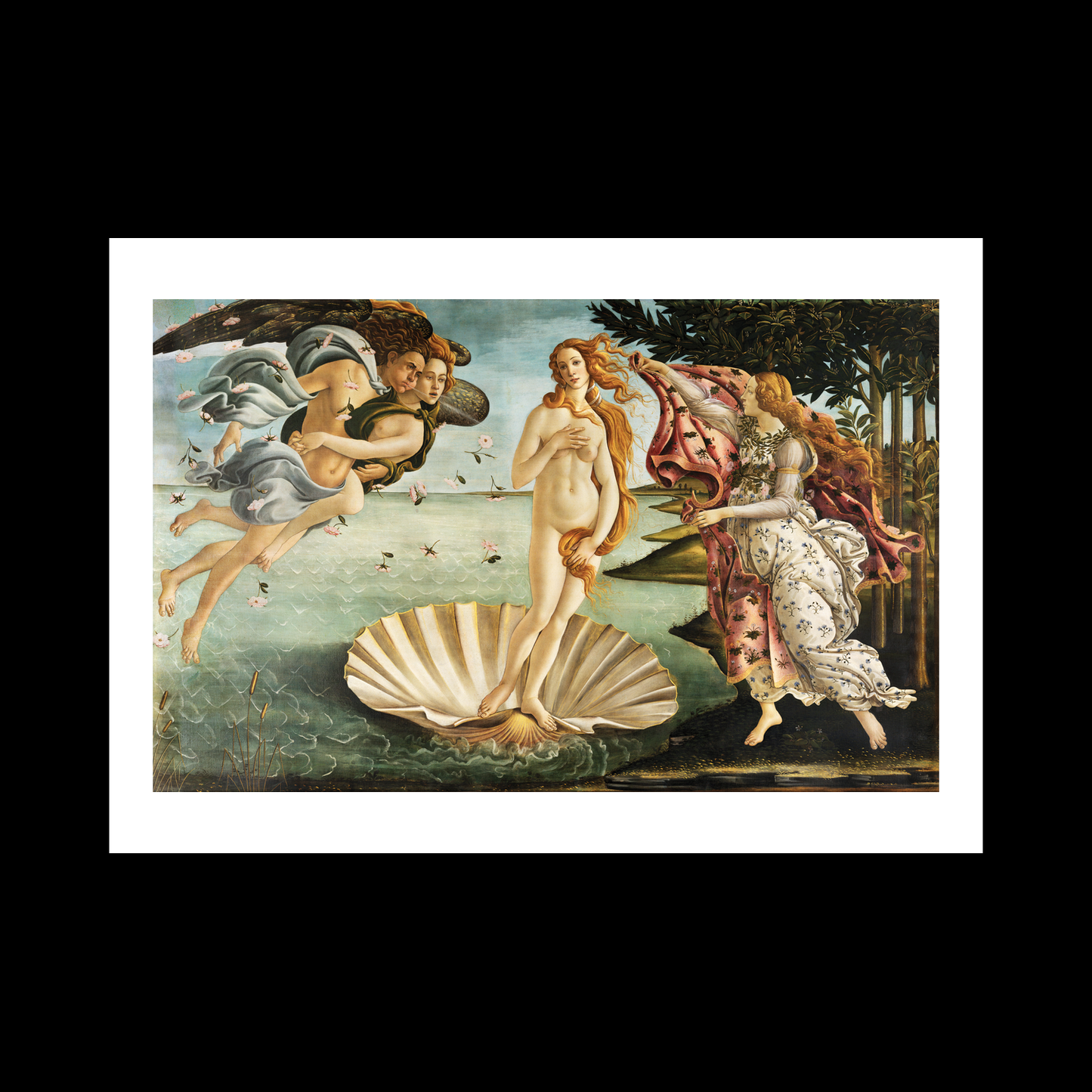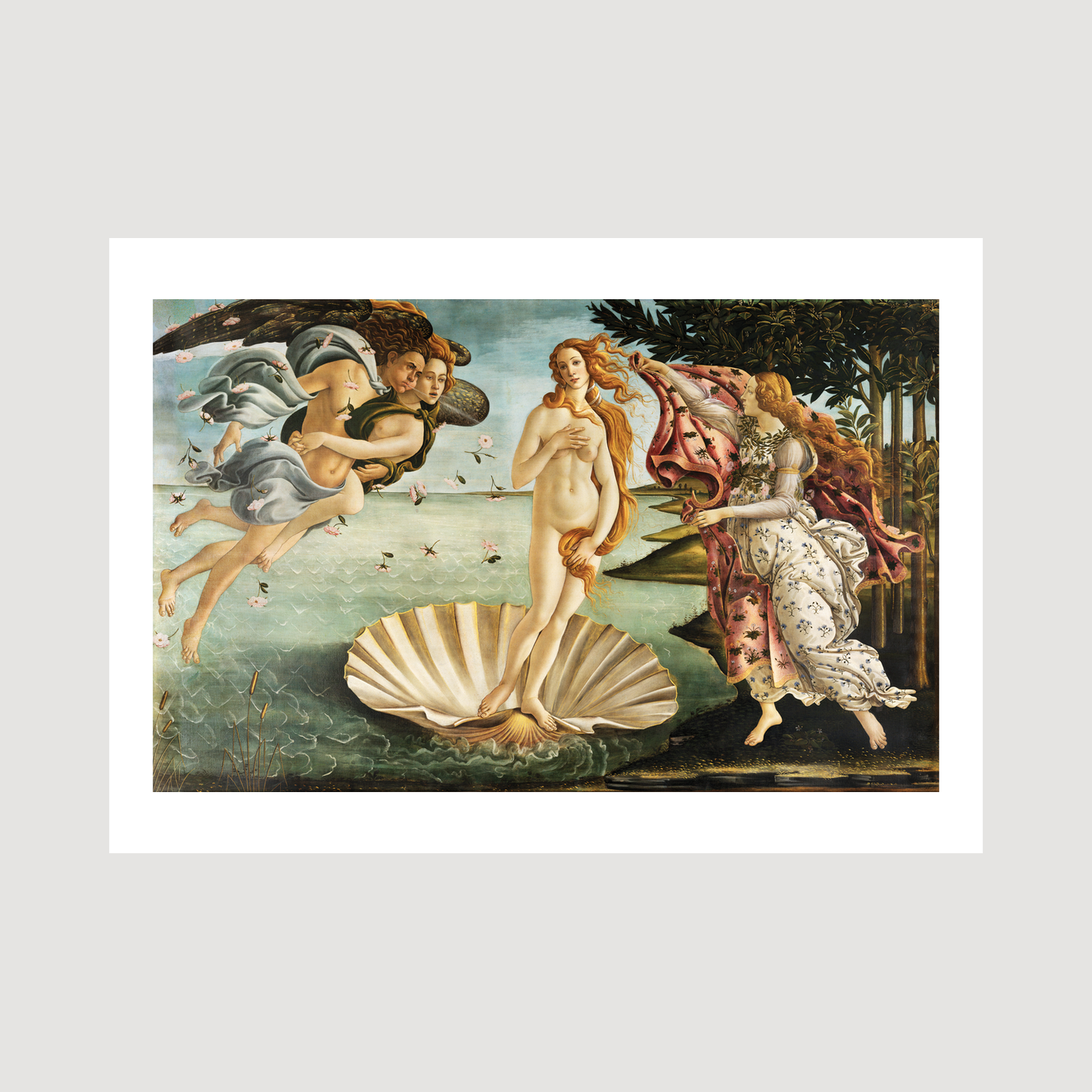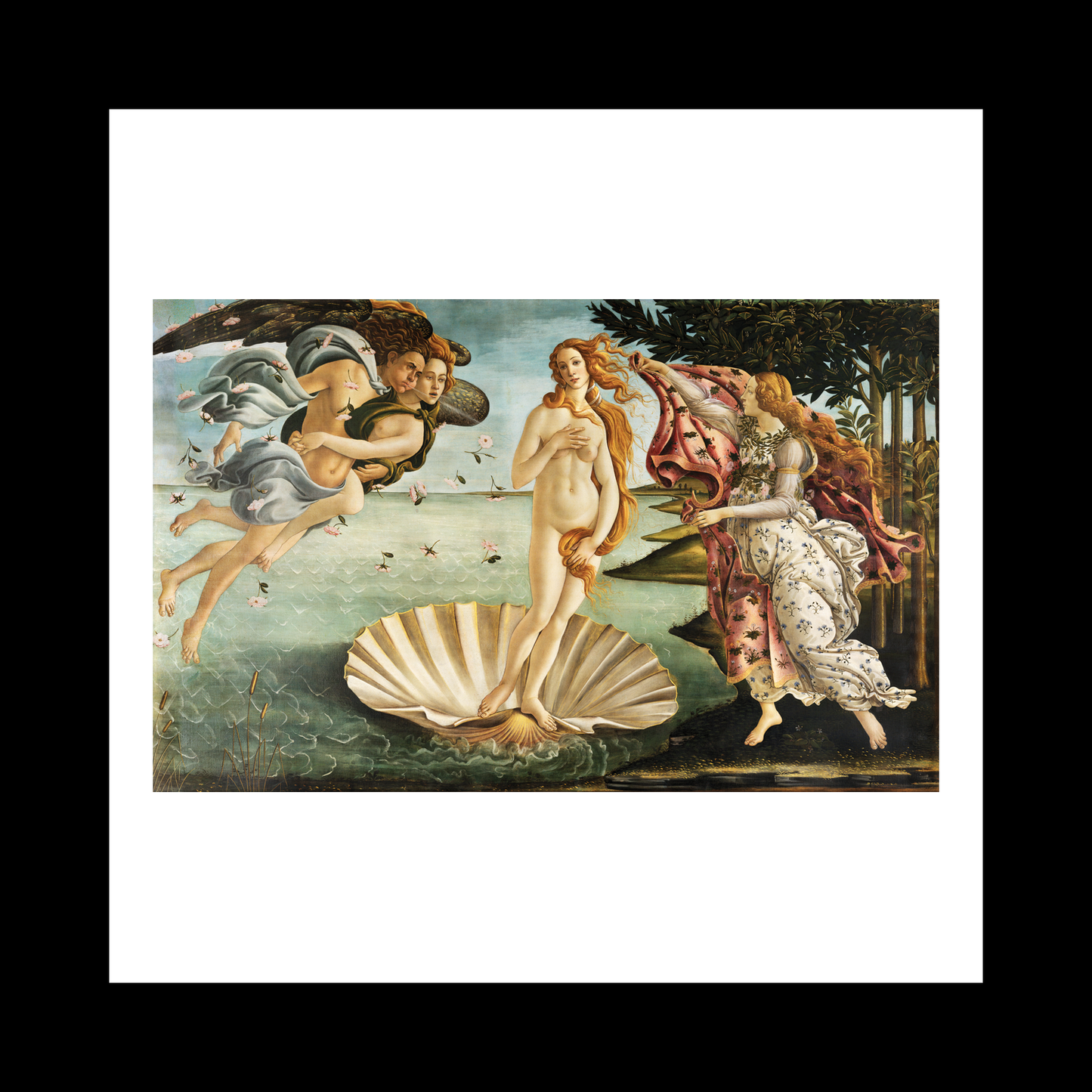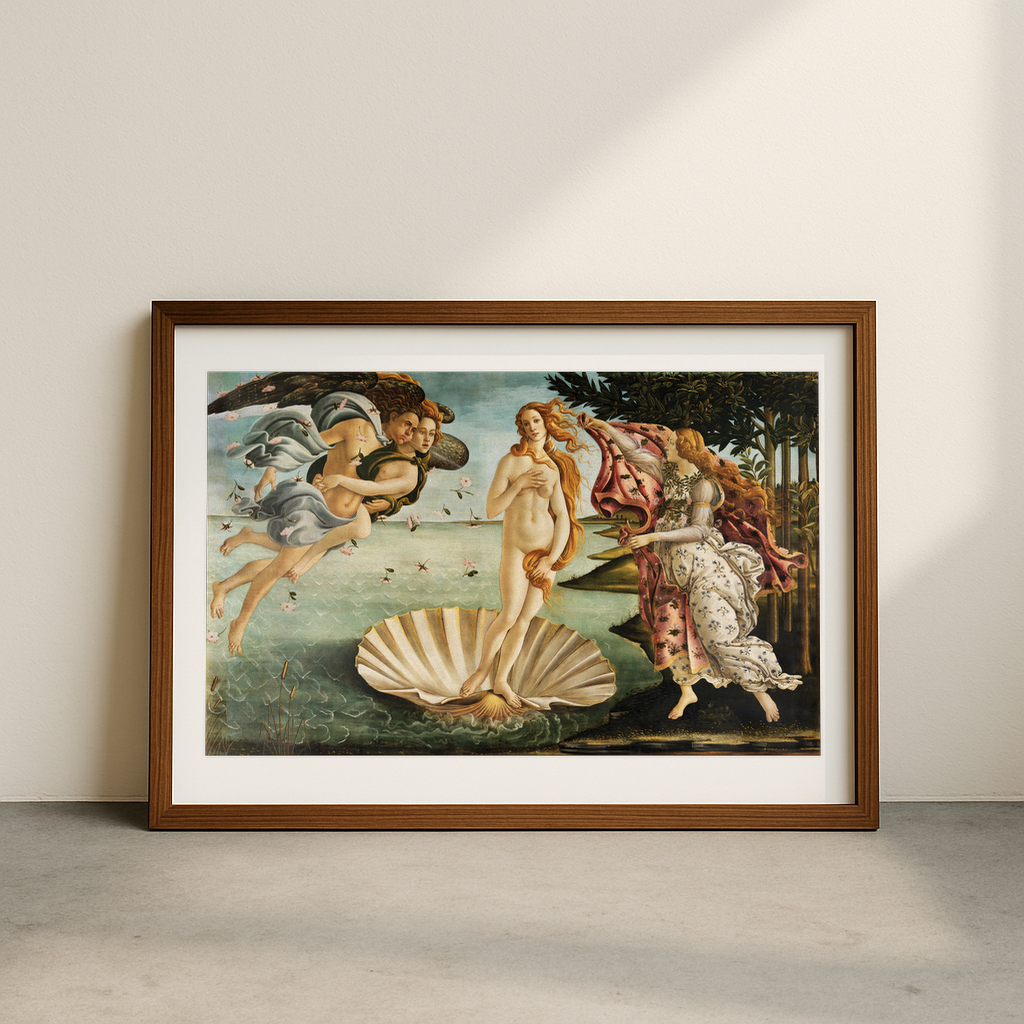1
/
of
6
Birth Venus (1485)
Birth Venus (1485)
Regular price
£12.45 GBP
Regular price
Sale price
£12.45 GBP
Taxes included.
Quantity
Couldn't load pickup availability
Botticelli's "The Birth of Venus" (1485) stands as one of the most enchanting works of the Italian Renaissance, depicting the goddess Venus emerging from the sea on a giant scallop shell. The painting showcases Botticelli's distinctive style through its graceful lines, ethereal figures, and delicate colour palette. The composition brilliantly captures movement through flowing hair and billowing fabric, while maintaining a sense of classical balance and harmony.
Created during Florence's Golden Age under the patronage of the powerful Medici family, this tempera on canvas work breaks from traditional religious themes of its time. Botticelli drew inspiration from classical mythology and Neoplatonic philosophy, combining Christian and pagan elements in a uniquely Renaissance manner. The painting represents ideal beauty and divine love, with Venus symbolising both earthly and spiritual beauty.
What makes this piece particularly intriguing is Botticelli's innovative technique and personal touches. He used tempera rather than the newly popular oil paints, creating a matt surface that enhances the work's otherworldly quality. The artist included subtle details like the roses floating in the air - symbols of the Medici family - and based Venus's features on Simonetta Vespucci, a renowned Florentine beauty. The painting's large scale (172.5 × 278.5 cm) was unusual for a non-religious subject at the time, marking a significant shift in Renaissance art towards secular themes.
View full details
Created during Florence's Golden Age under the patronage of the powerful Medici family, this tempera on canvas work breaks from traditional religious themes of its time. Botticelli drew inspiration from classical mythology and Neoplatonic philosophy, combining Christian and pagan elements in a uniquely Renaissance manner. The painting represents ideal beauty and divine love, with Venus symbolising both earthly and spiritual beauty.
What makes this piece particularly intriguing is Botticelli's innovative technique and personal touches. He used tempera rather than the newly popular oil paints, creating a matt surface that enhances the work's otherworldly quality. The artist included subtle details like the roses floating in the air - symbols of the Medici family - and based Venus's features on Simonetta Vespucci, a renowned Florentine beauty. The painting's large scale (172.5 × 278.5 cm) was unusual for a non-religious subject at the time, marking a significant shift in Renaissance art towards secular themes.











